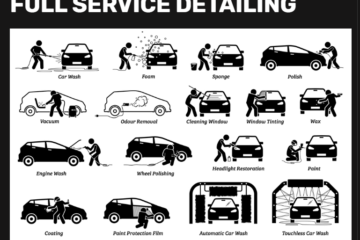A Dive Into Autism Symptoms with Rachna Sahney Pargi
Autism Spectrum Disorder encompasses a range of disorders that involve having a disturbance in development. This kind of developmental disorder leads to developmental delays while depriving the person of being normal in perceiving the world and interacting with others. It is usually a lifelong condition but may get better in some cases if diagnosed early and proper interventions are provided. It is essential to know the symptoms of ASD for families, teachers, and medical staff. To set in motion, let’s resort to the views of Rachna Sahney Pargi, a voice of respect in autism education and advocacy.
Understanding Autism Spectrum Disorder (ASD)
Before we point out some of its symptoms, it is very important to note that Autism Spectrum Disorder can be very distinctive in each of its audiences. That is what the word “spectrum” says about the condition. However while one would seem to have an essential and serious impairment in daily living requiring significant support, another will require little to no assistance to function independently. ASD affects communication, social interaction, behavior, and even sensory processing.
The symptoms of autism are very diverse, which makes it hard to understand them. In fact, by sharing detailed information on these symptoms, Pargi hopes that readers may be able to gauge these factors early in their lives.
Common Symptoms of Autism Spectrum Disorder
Three core groups of symptoms can be generally identified in the general symptoms of Autism Spectrum Disorder: social communication challenges, repetitive behaviors, and sensory sensitivities. Let’s look at each one in greater detail through the lens of insights from Rachna Sahney Pargi.
1. Challenges with Social Communication
The most prominent symptom of Autism Spectrum Disorder is the issue with social communication. According to Rachna Sahney Pargi, people with autism generally fail to understand and untangle a wee little information that may be conveyed through facial expressions, body language, or even the tone of voice. It makes social interactions confusing and overwhelming.
Some key signs that indicate problems with social communication are:
Significant avoidance of eye contact with others while talking.
Difficulty in understanding jokes, sarcasm, or spoken words.
Preference for playing alone rather than with others or engaging in solitary activities.
Failure to initiate or maintain a conversation.
These manifest during early childhood and the child with autism may not be able to participate in the play of other children or form friendships. As Pargi has so succinctly put it, and repeated constantly, these symptoms need to be identified very early and taken with the guidance of healthcare professionals.
2. Repetitive Behaviors and Restricted Interests
Another common symptom of Autism Spectrum Disorder is the presence of repetitive behaviors. As noted by Rachna Sahney Pargi, such behaviors can be manifested in any of the following: repetitive movements (for example, hand flapping or rocking), strict adherence to strict routines, or fixation on any particular themes or objects.
Examples of such repetitive behavior include the following: lining up one’s toys or objects in any exact order; and showing great fascination with specific topics, such as deep obsession for trains, dinosaurs, or numbers.
Distress when routines or schedules are changed.
Echolalia is repeating words or phrases heard from others.
While strange behaviors for neurotypical individuals can make sense for the ASD individual. The repetitive movements can be soothing or provide predictability and control. Pargi states to not try to eliminate the behavior but to find out what is causing it and assist an individual in finding strategies for needs.
3. Differences in Sensory Processing
Many people with Autism Spectrum Disorder have sensory sensitivities, which change the way they react to different stimuli. Rachna Sahney Pargi brings out the fact that such sensory issues are often ignored, although they form a big part of everyday challenges experienced by people diagnosed with autism.
Examples of sensory symptoms:
Avoiding certain fabrics or foods simply because of the texture
Hypersensitivity or hyposensitivity to sounds, lights, textures, or smells.
Poor ability to focus on background noise.
Vaguely or specifically seek sensory input through spinning, jumping, or other behaviors.
For some, bright lights loud noises, or even certain smells can prove overwhelming and create sensory overload. The person may cover their ears and close their eyes or seek a quiet place to regain calm. Pargi highlights the need for accommodating environments by caregivers and educators about such differences in senses.
The Need for Early Identification
Early detection of the symptoms of Autism Spectrum Disorder is very important in providing the child with the best possible support. According to Rachna Sahney Pargi, “Very big need for awareness and education, as early intervention brings a great revolution in the child”. Understanding symptoms at an early stage allows families access to numerous therapies and strategies aimed at improving social skills, communication, and coping mechanisms.
Pargi encourages parents to trust their instincts if they ever see or believe that something is not quite right with their child. “If you feel something is off, don’t hesitate to seek an evaluation, she says. Early diagnosis can open doors to essential services and resources that can help your child thrive.
Now that you know what Autism Spectrum Disorder looks like, comes the support. Here are just some ideas to get you started with working with Rahchana Sahney Pargi in mind:
Communication Aid: Think of several ways of using clear, simple language and pictures to aid the person with autism in communicating.
Routine and Structure: Use predictable routines for the individual to feel secure
Sensory-Friendly Spaces: Create a sensory-friendly space by reducing common triggers like overwhelming levels of noise or blindingly bright lights.
Social Skills Training: Role-play various social situations in a comfortable and secure environment to acquire self-confidence.
These methods can be handled differently and adapted to the special needs of the individual with autism, enabling them to receive the care required to reap maximum benefits.
Conclusion
Autism Spectrum Disorder is a condition with multifaceted symptoms. The more we understand, the better we can support and not create exclusivity within the environment. The insights into the thoughts of Rachna Sahney Pargi made me realize the importance of awareness, early intervention, and empathy towards the problems that an autistic has to face.
Each child with autism is unique, and it is based on their unique characteristics that one may bring about higher acceptance and better outcomes. “Autism is not a one-size-fits-all diagnosis,” emphasizes Rachna Sahney Pargi. “Every individual has his strengths and challenges. Our work is to provide understanding, support, and the resources they will need to succeed.”
That is, however, where education and awareness come into play, so the world will surely see progress toward a time when people with autism will be appreciated for who they are and be given the chance to become all they can be.



0 Comments